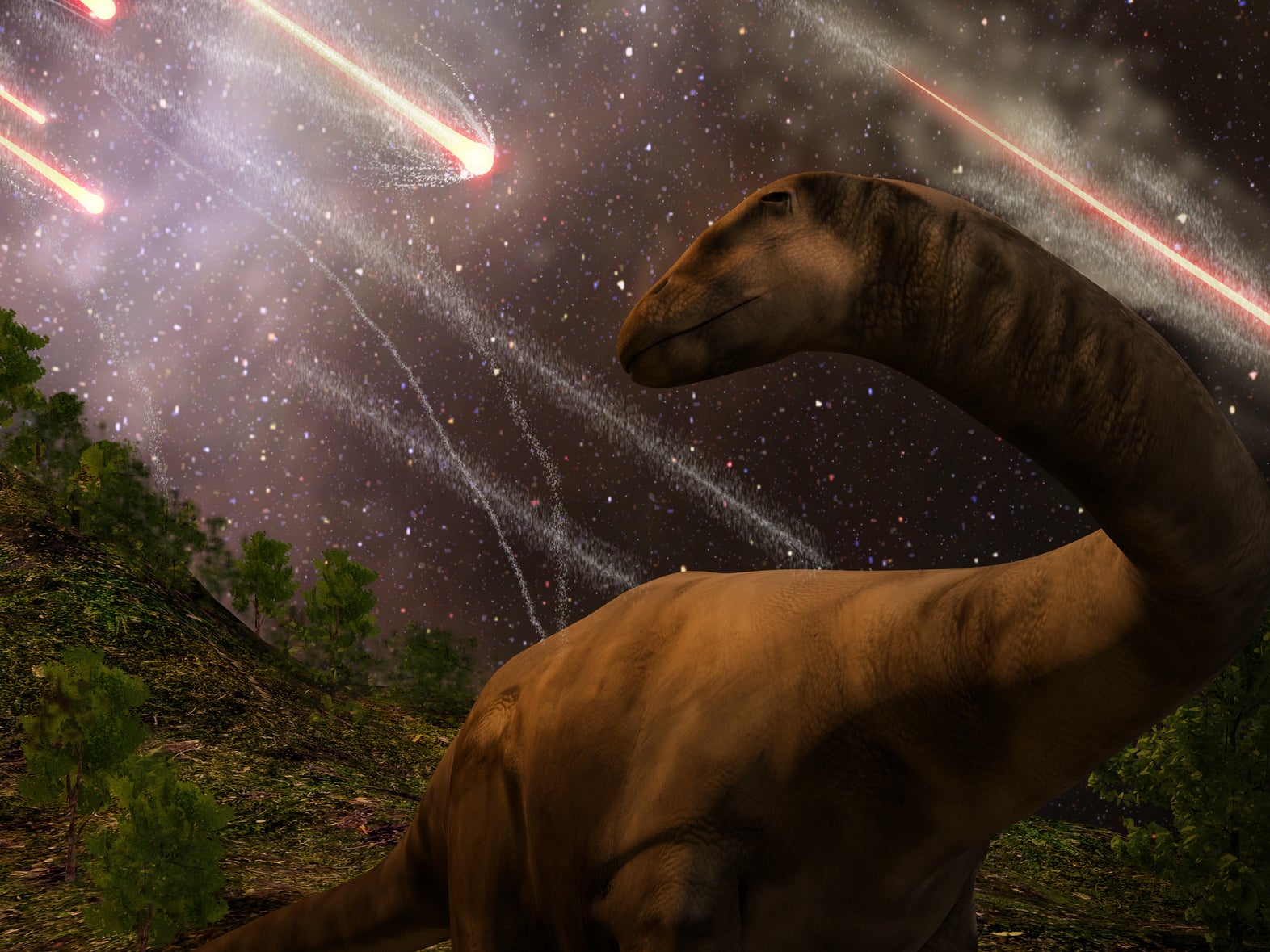Dinosaurs were thriving before deadly asteroid strike wiped them out 66 million years ago, study suggests
Common belief creatures were already dying out may be based on flawed theories, new research shows

Your support helps us to tell the story
From reproductive rights to climate change to Big Tech, The Independent is on the ground when the story is developing. Whether it's investigating the financials of Elon Musk's pro-Trump PAC or producing our latest documentary, 'The A Word', which shines a light on the American women fighting for reproductive rights, we know how important it is to parse out the facts from the messaging.
At such a critical moment in US history, we need reporters on the ground. Your donation allows us to keep sending journalists to speak to both sides of the story.
The Independent is trusted by Americans across the entire political spectrum. And unlike many other quality news outlets, we choose not to lock Americans out of our reporting and analysis with paywalls. We believe quality journalism should be available to everyone, paid for by those who can afford it.
Your support makes all the difference.Dinosaurs were thriving before the deadly asteroid strike that wiped them out 66 million years ago, according to a new study.
For decades scientists have believed the animals were already in decline because of changes in the climate.
But researchers have now refuted that theory after new analysis suggested they were flourishing before the Cretaceous period came to a sudden end.
"Dinosaurs were likely not doomed to extinction until the end of the Cretaceous, when the asteroid hit, declaring the end of their reign and leaving the planet to animals like mammals, lizards and a minor group of surviving dinosaurs, birds," said Alessandro Chiarenza, lead researcher and PhD student at Imperial College London.
"The results of our study suggest that dinosaurs as a whole were adaptable animals, capable of coping with the environmental changes and climatic fluctuations that happened during the last few million years of the Late Cretaceous. Climate change over prolonged time scales did not cause a long-term decline of dinosaurs through the last stages of this period."
Experts have previously argued the number and diversity of dinosaurs was already in decline before the asteroid strike.
But the new study, published in the journal Nature Communications, suggests the change in conditions for fossilisation led previous studies to underestimate how many dinosaurs roamed the earth in the lead up to the asteroid strike.
Scientists from Imperial, University College London and Bristol University focused on North America where the majority of dinosaur fossils are found.
During the time when these huge creatures walked the Earth, the continent was split in two by a large inland sea.
Orthodox belief has generally had it that there was a dwindling population of dinosaurs because more later fossils were found in the west of America, suggesting they were already starting to die out in the east when the asteroid struck.
But the new study argues this discrepancy is actually because the ground near the Rocky Mountains in the west is in perfect condition to preserve fossils when compared to the rest of the continent.
The team also examined the environmental conditions the dinosaurs would have endured, such as temperature and rainfall.
Their final picture suggested dinosaurs could have survived right across America – rather than simply where their fossils were found millions of years later.
"Most of what we know about Late Cretaceous North American dinosaurs comes from an area smaller than one-third of the present-day continent," said the study's co-author Dr Philip Mannion, of University College London. "Yet we know that dinosaurs roamed all across North America, from Alaska to New Jersey and down to Mexico."
Join our commenting forum
Join thought-provoking conversations, follow other Independent readers and see their replies
Comments